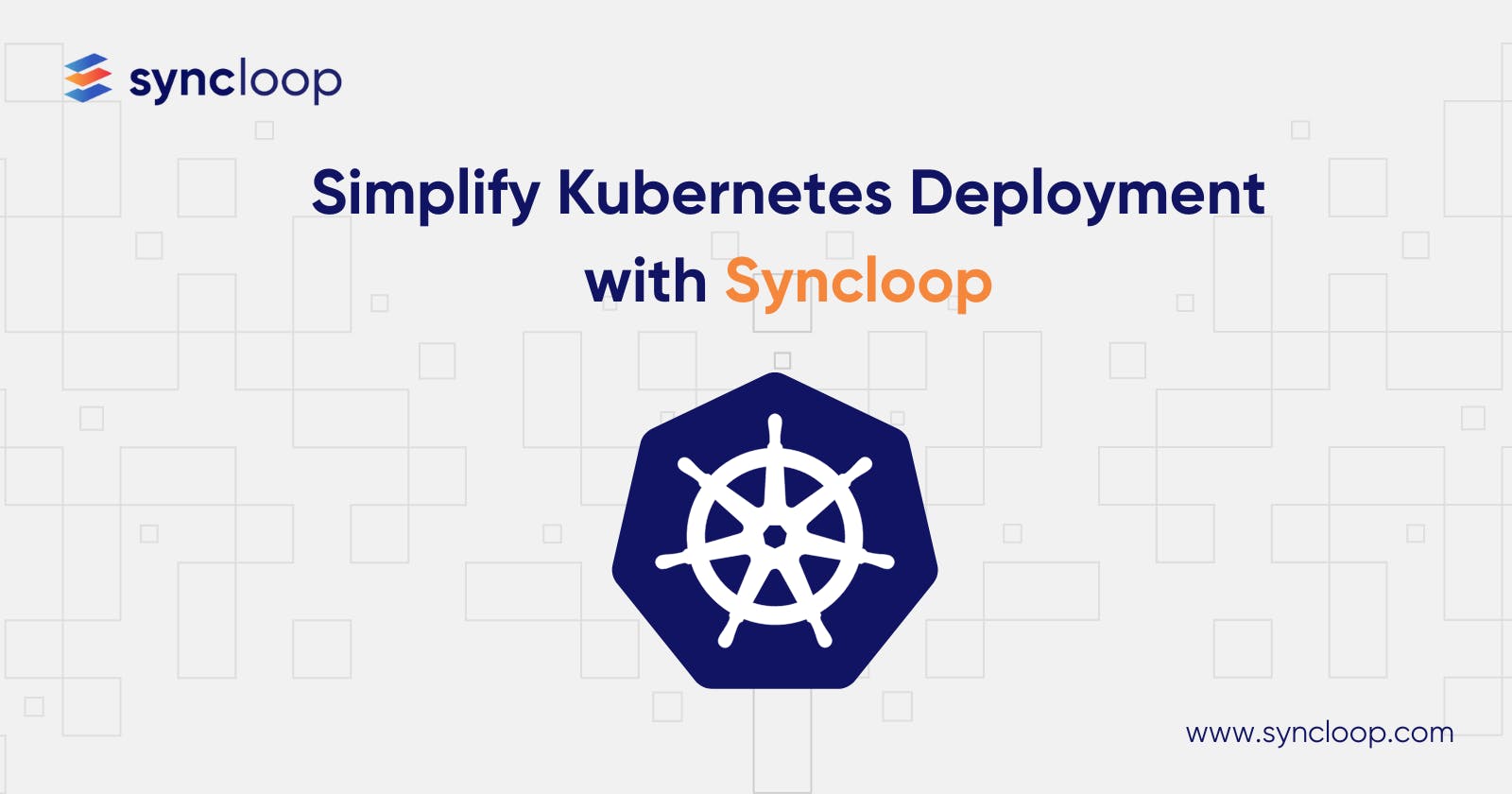Kubernetes has emerged as a leading container orchestration platform, enabling organizations to efficiently manage and scale their applications. However, the complexity involved in deploying and managing Kubernetes clusters can often be daunting for developers and system administrators. That's where Syncloop comes in - a powerful API development platform that simplifies the Kubernetes deployment process, making it more accessible and manageable for teams of all sizes. In this blog post, we'll explore how Syncloop can streamline your Kubernetes journey and enhance your overall development experience.
What is Syncloop?
Syncloop is a start-up-friendly and enterprise-ready API development platform that acts as a bridge between your vendor database and the visual experience interface. It offers a comprehensive set of features designed to accelerate API development, management, and deployment processes. Let's take a closer look at how Syncloop can simplify your Kubernetes deployment:
Visual Experience-Based Development Environment
Syncloop provides a visual experience-based environment that allows you to efficiently build, integrate, and deploy APIs. This visual interface simplifies the development process, enabling you to create and manage Kubernetes resources with ease. With Syncloop, you can visually define your Kubernetes deployments, services, and ingress rules, reducing the complexity of writing YAML manifests manually.
Seamless Integration with Kubernetes
Syncloop seamlessly integrates with your Kubernetes clusters, allowing you to manage and deploy your applications effortlessly. By leveraging Syncloop's powerful API development platform, you can define your application's resources, configure environment variables, and handle secrets, all within a user-friendly interface. Syncloop's intuitive controls enable you to streamline your deployment workflows and ensure consistency across your Kubernetes environments.
Time-Saving Automation
One of the key advantages of using Syncloop is the significant time savings it offers. Compared to traditional Kubernetes deployment approaches, Syncloop can reduce the time spent on API development, debugging, and deployment by substantial margins. For example:
API Development: Syncloop's visual development environment eliminates the need for manual YAML configuration, allowing you to build APIs faster and more efficiently.
Debugging: Syncloop provides live debugging support, enabling you to identify and fix issues with a single API call or sequence of calls, reducing the debugging time by 80%.
Deployment and Management: Syncloop automates many of the tedious tasks involved in deploying and managing APIs, saving up to 90% of the time typically spent on these activities.
Addressing Integration Challenges
Syncloop recognizes that integrating legacy systems can often present challenges. With its robust capabilities, Syncloop helps address integration issues, facilitating seamless communication between your Kubernetes clusters and legacy systems. Whether you need to extract data from a database, integrate with external services, or connect to a legacy API, Syncloop provides the tools and support necessary to overcome these obstacles.
Example: Simplifying Kubernetes Deployment with Syncloop

To illustrate how Syncloop simplifies Kubernetes deployment, let's consider an example scenario where you want to deploy a microservices-based application on your Kubernetes cluster.
Defining Kubernetes Resources: Using Syncloop's visual interface, you can define your deployment, service, and ingress resources by simply dragging and dropping components onto the canvas. This intuitive approach eliminates the need to write lengthy YAML manifests manually.
Configuring Environment Variables: Syncloop allows you to set environment variables for your deployments easily. You can specify variables like database connection strings, API keys, or any other configuration values required by your application. Syncloop's interface ensures that these variables are securely managed and easily accessible.
Managing Secrets: Syncloop provides a built-in mechanism for managing secrets within your Kubernetes deployments. Instead of directly exposing sensitive information in your YAML files, you can leverage Syncloop's secret management feature to securely store and access secrets, ensuring compliance with security best practices.
Deployment and Scaling: Once you've defined your Kubernetes resources, Syncloop simplifies the deployment process. With a single click, you can deploy your application to your Kubernetes cluster, automatically scaling your pods based on the defined resource requirements.
By leveraging Syncloop's features, you can streamline your Kubernetes deployment, reduce the potential for errors, and expedite the time-to-market for your applications.
Conclusion
Syncloop empowers developers and system administrators to overcome the complexities associated with Kubernetes deployment. By offering a visual experience-based development environment, seamless integration with Kubernetes, time-saving automation, and support for addressing integration challenges, Syncloop simplifies the entire Kubernetes journey.
Are you ready to enhance your Kubernetes deployment experience? Visit Syncloop's website to learn more about how Syncloop can revolutionize your API development process and accelerate your path to success.
Join our vibrant tech community on platforms like Discord, LinkedIn, and Twitter
Syncloop - Simplify and Accelerate Your Kubernetes Deployment!
